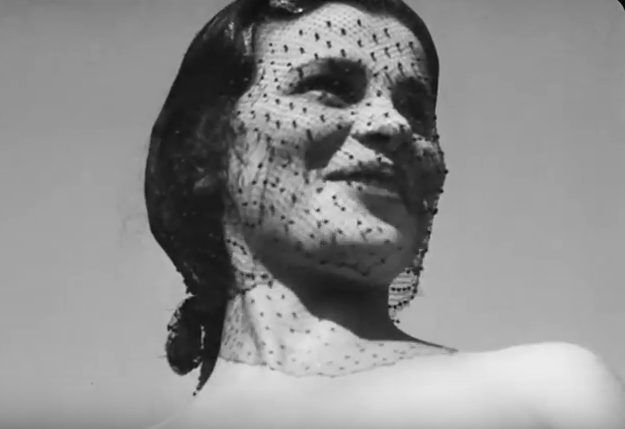Curaçao: The Anti-Tourist’s Caribbean
“Just call me dushi,” reads the t-shirt in the airport shop as I arrive in Curaçao. Dushi comes from the Spanish word dulce, meaning dessert or sugar; the literal translation here is sweetie, and sweet indeed is the tiny, utterly charming island of Curaçao in the Dutch Antilles.
When we think of the Caribbean, we often think of people lying on the beach sipping piña coladas outside a generic, albeit luxurious, resort. But if you are the sort of person who shudders at the thought of this style of vacation, you might want to reconsider Curaçao.
Far less developed or explored by tourists, Curaçao’s charm lies in its history, its authentic experience, and its culture that doesn’t strive to present a picture-perfect postcard to its visitors. It’s not pristine, it’s lived-in; and this is what makes it special. Its vibrant heritage is both European and African, representing more than 50 nationalities. You will hear Dutch, Spanish, and English spoken, but the main language is Papiamentu, a Creole dialect.
The best part of exploring Curaçao is that it feels undiscovered; there are no “tourist traps” here. It’s largely untraveled by other Americans – only 13% of its visitors are from North America; the rest are mainly from Europe and a few South Americans. The historic capital city of Willemstad greets you with its colorful 17th and 18th century Dutch architecture, perched above the clear turquoise waters. This lively port is one of six UNESCO World Heritage sites in the Caribbean, preserving some 765 buildings as national monuments.
My favorite aspects of Willemstad? The pontoon bridge that connects Old Town Punda District with Otrobanda (literally, the other side). Sixteen pontoons support the pedestrian walkway between the two sides – until boats need to come through the waterway passage. Then, the bridge swings open using two powerful motorboats. Quite a feat of engineering, especially when you consider that it was constructed in 1888.
The second thing that I loved about Willemstad was rounding a corner and literally stumbling on the Venezuelan floating market. If you walk along the waterfront away from the bridge, you’ll find a colorful assortment of fruits and vegetables alongside handcrafted artisan works and fish stalls. The Venezuelans who sell here come back and forth between Curaçao and their home country, with their fishing boats doubling as living quarters while they sell at the market. It’s a great place to stroll, people watch, and interact with the local merchants and shoppers.
Of course, a big draw of any Caribbean destination is the water sports that accompany it, and Curaçao is no exception. There are many options for excellent diving and snorkeling, largely untouched and uncrowded. Venture to the far west end of the island and you find yourself in a remote, almost completely undeveloped area surrounded by hundreds of acres of Christoffel National Park.
Here, I went on a snorkeling adventure led by a German guide named Bea, visiting the Mushroom Forest and the magical Blue Room. This underwater cavern requires you to swim under the overhanging limestone that protects it, but when you do, you are rewarded with the water shimmering its light all around the cavern roof above, while underneath schools of brightly colored tropical fish dart through the coral. A host of other pristine dive sites are scattered around the shores of Curaçao, which has become a prime location for independent, off-the-beaten-path divers.
For some completely anti-tourism experiences, check out two places that even most locals don’t know about. At Den Paradera, Dinah Veeris lovingly maintains several acres of plants and herb gardens, from which she concocts an amazing array of natural healing herbs and beauty potions. Den Paradera translates to “the place where you feel at home,” and Ms. Veeris is completely welcoming as she explains what each plant is and its purpose. From curing headaches and stomach problems, to the requisite love potions, this is clearly a labor of love for Ms. Veeris, who is one of the last people to practice this type of traditional, organic medicine. When her plants are sick, she puts them in a hammock and rocks them, while singing a lullaby. Well worth the visit, and the on-site store sells most of the potions (of which I walked away with many).
For an awesome meal that you won’t find in any guidebook, head to Equus on a Friday night. Equus is family-owned and located in a quiet residential neighborhood. Most of the time, the home and land operate as a horse stable, but on Friday nights, it turns into a restaurant that the locals frequent. There are only two items on offer: chicken and beef. Big, long skewers of the dripping meats, to be precise, that are grilled over an open fire and then hung above your picnic table from metal hooks. The meat is served with warm home-baked bread and a tangy dipping sauce; you simply pull it off the skewers with your fingers and enjoy! This is not a place for vegetarians – there are not even any side dishes or salads. To find it, ask a taxi driver or your hotel; most residents know where the Equus stables are.
And if you want to avoid the aforementioned generic resorts and their beach-lounging tourists, retreat to the Hotel Kura Hulanda. This UNESCO World Heritage site is much more than a hotel; it’s an entire village created as a historic and environmental preservation project out of existing, meticulously restored 17th and 18th century Dutch buildings.
But the real story of Hotel Kura Hulanda is its treasures of art, architectural artifacts, and surprises that await your discovery at every turn. Owner Jacob Gelt Dekker is truly a modern-day Indiana Jones, who delights in traveling the world and bringing many of his amazing finds back to Kura Hulanda. You will definitely want to take some time to simply stroll the grounds and see what is tucked away in every nook and cranny. In the courtyard you find an intricately carved, antique Thai covered bench. In another, you stumble upon an open room full of Cotton Club and Harlem Jazz Age memorabilia. Yet another turn reveals incredible stone and marble sculptures, from which you step through a doorway to enter an amazing world of stories told through photographs.
Shelley is a freelance writer based out of Austin Texas, but she vagabonds in any part of the world whenever possible. Her non-fiction book, The Weight of Silence: Invisible Children of India, follows her journeys into the orphanages, streets and slums of India where millions of children live without families. Shelley’s areas of writing specialty include travel, cultural issues, the arts, women & children, non-profit and social activism, entrepreneurship, business, architecture and interior design.
Shelley Seale has written for National Geographic, Globe Pequot Press, Washington Magazine, Transitions Abroad and Andrew Harper Traveler Magazine among others. Her work has also been published in The Seattle Times, GoWorld Travel Magazine, Intrepid Travel, InfoChange India, The American Chronicle, The Austin Business Journal, Austin Monthly, San Antonio Express-News, Austin Woman and more.
be sure to also check out Shelley Seale’s webpage
Discover more from Tango Diva
Subscribe to get the latest posts sent to your email.







